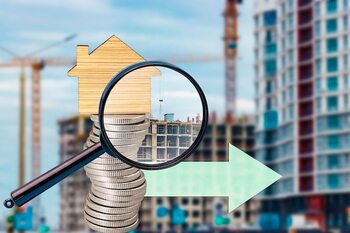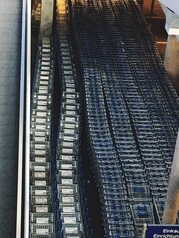The value of urban mobility in residential appreciation

The concept of urban mobility has gained crucial importance in the valuation of residential properties. In a world where efficient transportation is essential, proximity to services and transport translates directly into added value. This article will explore how adequate mobility infrastructure can enhance the appeal of a location, benefiting both owners and tenants. Discover why investing in areas with optimal mobility is not only a practical decision but also financially smart.
1. The connection between urban mobility and real estate value
Urban mobility has become a determining factor in the valuation of real estate, as it directly influences the quality of life of its inhabitants. Properties located in areas well connected by public transport, bike lanes, and quick access to main roads are not only more attractive to buyers, but they also tend to maintain their value over time. This phenomenon is due to the fact that ease of movement reduces the time and effort required to access essential services such as schools, hospitals, and workplaces, which is highly valued by families and professionals.
Moreover, investment in mobility infrastructure not only benefits current property owners but also attracts new commercial and residential developments. As an area improves its connectivity, a positive cycle is activated where increased demand drives property prices up. This creates a domino effect: more residents mean more local businesses and improved services, further enhancing the area's appeal. Therefore, considering urban mobility as a key factor when evaluating real estate investment potential can prove to be a savvy financial strategy for those looking to maximize their return on investment.
2. Nearby services: the heart of residential added value
Proximity to essential services such as supermarkets, schools, hospitals, and recreational spaces is a determining factor in the appreciation of a property. Buyers and renters are not only looking for a place to live, but also want easy and quick access to what they need in their daily lives. This convenience translates into a greater willingness to pay more for properties located in areas with good service infrastructure, thus elevating their market value. The connection between quality of life and accessibility has become a crucial aspect for those looking to settle in a place that offers everything they need at their fingertips.
Additionally, the development of efficient public transportation further enhances the importance of nearby services. Areas well-connected by trains, buses, or alternative mobility systems allow residents to commute easily to their workplaces or schools. This not only improves the quality of time spent commuting but also increases the neighborhood's appeal to future buyers or tenants. Therefore, investing in areas with good mobility options and nearby services becomes a smart strategy to maximize the long-term profitability of real estate investments.
3. Impact of public transportation on property valuation
Public transportation plays a fundamental role in the valuation of residential properties, as it facilitates access to various areas of the city and reduces travel times. Areas with efficient public transportation infrastructure, such as metro, buses, and trams, tend to experience an increase in real estate demand. This is because potential buyers and renters greatly value the ability to move around without the need for a private vehicle, which not only represents economic savings but also an improvement in quality of life by decreasing the stress associated with traffic and parking.
Additionally, areas well connected by public transport tend to attract commercial developments and additional services, creating a multiplier effect on appreciation. The presence of nearby stations or stops can be a determining factor for those looking to buy or rent a property. By being linked to urban mobility networks, these spaces become strategic locations where different social and economic dynamics intersect, thus generating a more vibrant and desirable environment. Ultimately, investing in properties near public transport not only ensures better accessibility for its occupants but also promises sustained growth in value over time.
4. How urban developments influence quality of life and property values
Urban developments play a fundamental role in the quality of life of residents, as they determine access to essential services such as schools, health centers, and recreational areas. Proper urban planning promotes the creation of pleasant and safe public spaces, fostering a sense of community and well-being. When an area has well-designed infrastructure that facilitates public transport and pathways for bicycles or pedestrians, it not only improves mobility but also the overall satisfaction of the inhabitants. This translates into a higher demand for those properties, increasing their value in the market.
Additionally, the impact of urban developments goes beyond immediate quality of life; it directly influences residential appreciation. Homes located in areas with easy access to efficient transportation tend to maintain their value and even appreciate more quickly than those situated in less accessible zones. Buyers are increasingly aware of the cost of time lost in long commutes and seek properties that offer convenience and connectivity. Therefore, investing in neighborhoods where significant mobility improvements are taking place is not only beneficial for current residents but also represents an attractive opportunity for future investors.
5. Case studies: successful neighborhoods due to their excellent mobility
Case studies of neighborhoods that have achieved remarkable success due to their mobility are inspiring examples of how urban planning can transform communities. Neighborhoods like **Copenhagen** in Denmark have been recognized for their focus on the bicycle as the main mode of transport. Well-designed cycling infrastructure has not only reduced vehicle congestion but has also boosted local commerce and increased the quality of life for its residents. This approach has led to a significant rise in property prices, demonstrating that accessible and sustainable mobility can be a driver for residential appreciation.
Another exemplary case is the neighborhood **Helsinki**, where a highly efficient and connected public transportation system has been implemented, including trams, buses, and trains. This network not only facilitates daily commutes but also promotes a more active and healthy lifestyle among its residents. Areas near key stations have seen an increase in their appeal, resulting in a steady appreciation of real estate value. Observing these examples, it is clear that investing in areas with excellent mobility not only enhances the daily experience of residents but also represents a safe bet for those looking to maximize their investment in real estate.
6. Future trends: what to expect in urban mobility?
Urban mobility is constantly evolving, and future trends promise to further transform the way we move within our cities. With the advancement of technology, a significant increase in the use of electric and autonomous vehicles is expected, which will not only reduce the carbon footprint but also change the way urban infrastructures are structured. The cities of the future will be designed to integrate these new modes of transport, improving connectivity and facilitating access to areas previously considered peripheral. This transformation will generate an increase in demand for properties located near key transportation nodes, thereby raising their value.
Moreover, the growth of the concept of "smart cities" introduces innovations such as mobile applications for coordinating ride-sharing and traffic management systems that optimize urban flows. These technologies not only enhance the user experience but also enable more efficient planning of urban space. As a result, communities where these solutions are implemented will see an increase in their residential appeal. The ability to move easily and quickly will be a determining factor for buyers and renters, making areas with modern and accessible infrastructure increasingly desirable from a financial standpoint.
7. Sustainability as a key factor in residential added value
Sustainability has become a determining factor in the valuation of residential properties, especially in the context of urban mobility. Nowadays, buyers and renters are increasingly seeking places that not only offer accessibility to public transport and services but also promote eco-friendly practices and a lower carbon footprint. Housing projects that integrate sustainable solutions, such as buildings with environmental certifications or well-designed green spaces, tend to experience a significant increase in their value. This is because people are willing to pay more to live in environments they consider responsible and aligned with their values.
Additionally, fostering a culture of sustainable mobility —which includes options like bike-sharing, pedestrian infrastructure, and easy access to public transport— helps create more attractive communities. These features not only enhance the quality of life for residents but also increase interest from investors and developers. With the growing focus on more livable and environmentally friendly cities, it is clear that areas prioritizing sustainability will be better positioned to maintain or increase their residential value in the future. In this regard, investing in properties located within areas with sustainable initiatives is a smart strategy for both owners and tenants.
8. Tips for investors: choose strategic locations that maximize returns
When considering real estate investments, it is essential to identify locations that are not only accessible but also aligned with urban mobility trends. Areas close to public transport stations, bike lanes, and bus routes often experience sustained growth in demand. This translates into increased appreciation, as tenants and buyers value the convenience of getting around without having to rely solely on private vehicles. Additionally, studying urban planning projections and local development plans can provide insights into future infrastructure improvements that will further enhance property value.
Another aspect to consider is the analysis of the immediate environment. The presence of services such as supermarkets, schools, parks, and health centers not only improves the quality of life for residents but also increases the area's attractiveness for potential tenants or buyers. Investments in areas where an increase in commercial offerings is projected or where new public spaces are being developed can be particularly lucrative. Ultimately, selecting strategic locations based on these criteria not only ensures a solid investment but also contributes to the sustainable and balanced development of our cities.



